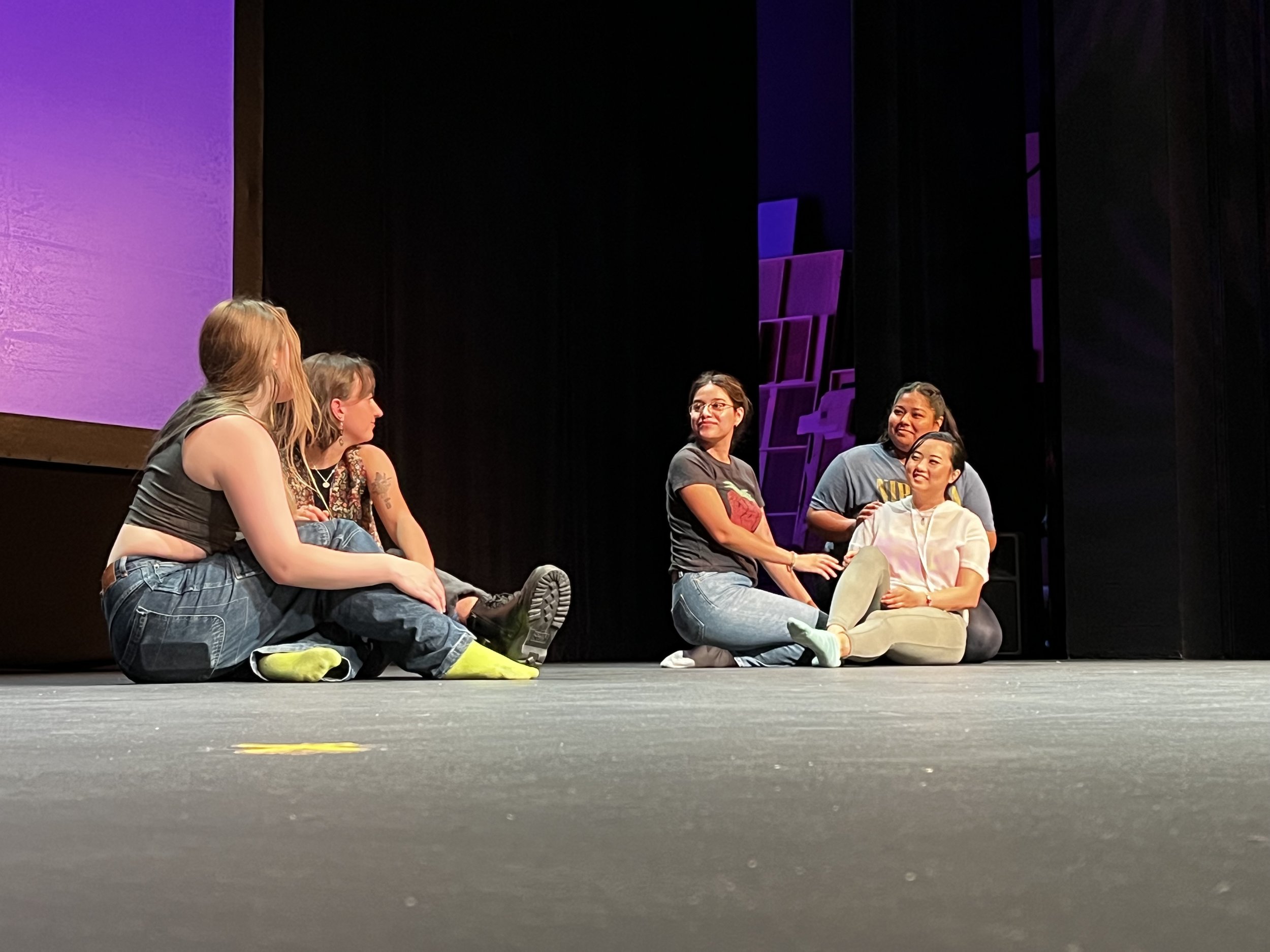Creating with Consent–as Pedagogy
For the past few weeks, I’ve been working with artists from across the US, all of whom gathered in Fresno (in July!) to take my course Creating with Consent: Onstage Intimacies.
These artists—MFA-holding actors, dancers, and film directors mingling with current undergraduates studying a variety of performing arts specializations—came to this course to learn not only about sustainable practices for staging intimacy, but to learn more specifically about how to embed consent into all creative processes.
Our learning notes after a full week of working together
So often, when those in the performing arts discuss “consent-based practices,” the concept actually being discussed is limited to physical boundaries of actors when performing scenes of scripted physical intimacy or levels of undress.
So often, we fail to acknowledge that consent is a key factor in the success of collaborative processes—and in pedagogy.
For example:
As a director, I might not love or want to go with a specific design choice—it might not even be my third preference—but I can understand why it’s necessary for the production to move forward with that option, and consent to it. That’s effective collaboration.
Or;
As an actor or student, I might not be open to engaging in affective memory exercises with my castmates, but if the facilitator has investigated my personal history and learned about a traumatic life experience, then brings that up during without my consenting to engaging with that content, I may feel manipulated and violated (and may be sent into the experience of reliving the trauma), rather than feeling as though I’ve learned a valuable technique. In fact, the shock may leave me incapable of learning in the moment, and may decrease my trust in the facilitator, in my creative coworkers, and in the collaborative process.
In circumstances where we create art with and upon our own physical and emotional beings rather than through another medium, and in circumstances within which we may disagree or deal with contentious topics, consent can be a major factor of collaborative processes, and is a necessary factor for pedagogical approaches. Consent should not come to mind only when engaging with physically intimate or sexual storytelling.
And so, we gathered to learn about how to better implement consent in all elements of the creative process and of performance pedagogy.
We discussed the need for transparency, agency, and adaptability in processes, and the need for more mindful practices that center explicit teaching related to self-care practices that can be utilized while creating, rather than leaned onto as crutches for recovery after harm occurs.
Because intimacy choreography practices have fueled training and theory in the performing arts, we started there, with guest artist Laura Rikard teaching all students the best practices of theatrical intimacy education. After five days, all students had completed 40 hours of training and had staged four scenes of physical intimacy. Throughout this time, we discussed and practiced approaches for facilitating and empowering communication about non-physical consent, as well, especially focusing on trauma-informed practices that arts educators and facilitators can utilize to uplift the most vulnerable participants in any given room.
In our second week, we honed in on practices that artists can use to recognize and support their own personal boundaries when dealing with storytelling that nears their own personal traumas or asks the artists to use their personal experience to fuel the storytelling. As one student said: “I’ve been mining my own trauma as a queer man of color to impress my faculty for so long, and I kept being mad at myself for not being able to work through things. I never realized that ‘using it’ was actually keeping the trauma active. How is it that I have two masters’ degrees, but nobody has ever once thought to teach me these tools before now?”
And this is why I argue for consent-based pedagogy.
Our students enter our classrooms already exposed to media stories and inherited mythologies that glorify artists who’ve endured harm in the act of creation as artistic geniuses. They’ve already digested the “easy to work with” myth. We, as educators, need to explicitly provide tools to our students and support the use of these tools when it comes to recognizing emotional, cultural, and professional boundaries as well as physical boundaries.
Shaped by this knowledge, we spent the final several days of our class exploring methods and approaches from Frantic Assembly, Tectonic Theatre Project, and the Open Space method, informed by consent-based approaches, to create an hourlong performance, entirely created with consent, whether each scene included physically intimate storytelling or not.
As these artists return home to New York, Virginia, Texas, Illinois, Guatemala, Colorado, Washington State and cities across California, I hope that they bring their newly-found intimacy choreography skills to their own artistic communities. But, more than that, I hope they spread awareness that consent is a key component of effective collaboration outside of scenes of physical intimacy, and that personal, professional, and cultural boundaries absolutely are as valid as boundaries around physical contact and touch.
The resulting performance was simple, but well-summarized by my colleague and fight instructor Colin Brescia, when he said: “I wept. Not because the performance was sad, but because it made me reflect on my experience in this art form. And because it reminded me of what we can still become.”









